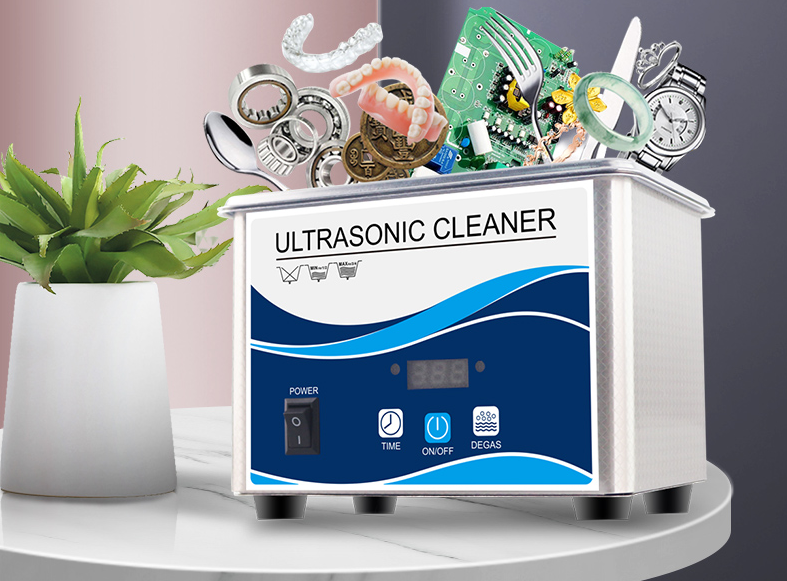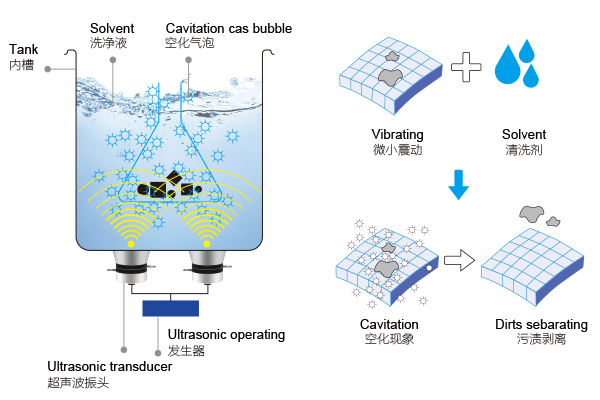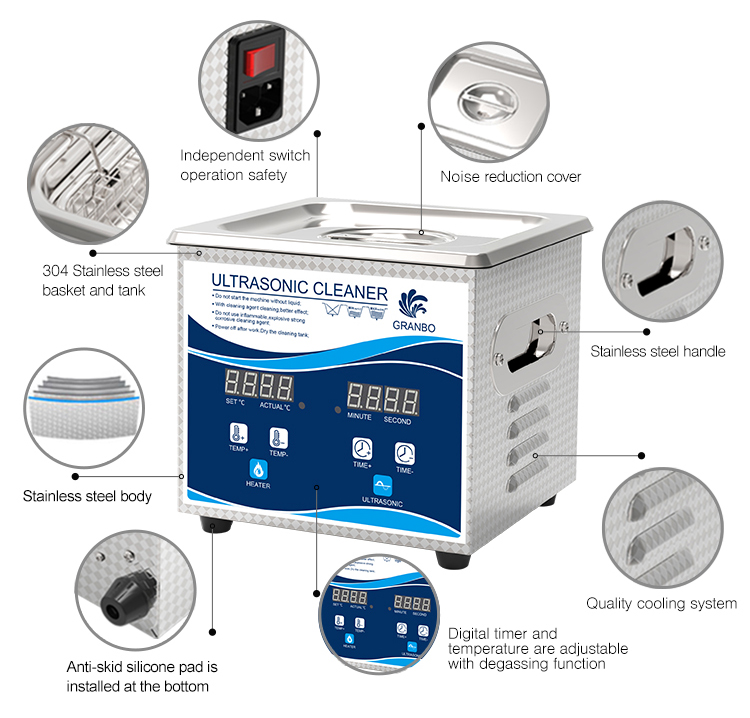Ultrasonic cleaning appeared in the 1930s, after its extensive research and application. Ultrasonic cleaning is only a few decades of history, but its performance and economy has been fully demonstrated. Ultrasonic cleaning has quickly become an indispensable part of a variety of industries, a variety of product manufacturing processes.

Ultrasonic cleaning principle.

1, the high-frequency oscillation letter issued by the ultrasonic generator, through the transducer into a high-frequency mechanical vibration wave and propagated to the cleaning medium.
2, ultrasound in the cleaning liquid sparse and dense radiation forward, so that the liquid flow and produce countless tiny bubbles, when the liquid is more than 20 kHz ultrasonic shock, sound pressure reaches a certain value, the liquid in the tiny bubbles (cavitation nucleus) is positive and negative pressure alternating effects, so that the bubble rapidly increased and then suddenly closed. Ultrasonic energy in the cleaning medium triggered by the “cavitation effect”.
3, the liquid “cavitation effect” so that tiny bubbles on the surface of the workpiece produced a high-frequency vibration scrubbing effect; bubble closure moment generated by the local high temperature and high pressure and weakened the insoluble dirt (or oil) between the molecular force, so that they are dispersed in the liquid, thus stripping the adhesion between the dirt and the surface of the workpiece.
4, cleaning fluid in the ultrasonic energy uninterrupted, continuous cavitation effect and rinse the surface of the workpiece, so that the surface of the workpiece without damage and get clean.
5, the effect of ultrasonic cleaning depends mainly on the generator and the matching of the transducer (frequency consistent, power appropriate) and the cleaning time, in addition to the installation of ultrasonic oscillator and the type of cleaning medium, concentration, temperature, flow, etc. have a great relationship.
Characteristics of ultrasonic cleaning.
Ultrasonic cleaning and chemical cleaning, microbial cleaning has a great difference, is a modern industry attaches great importance to the new process. It can be carried out manually, but also continuous and automated operation. It improves the cleaning efficiency, but also to improve the grade of the product, summarized its characteristics are as follows:
1, ultrasonic cleaning is based on the ultrasonic “cavitation effect”, the workpiece is completely submerged in the cleaning fluid, the liquid is ubiquitous, continuous cavitation impact, with full coverage of the gapless cleaning reputation.
2, the size of the ultrasonic cleaning force and the generator frequency, power, time, good control, put into an ultrasonic cleaning line, can be applied to multiple varieties, multiple workpiece cleaning, good economic efficiency.
3, suitable for industrial automation, equipment can be fully sealed, can use robotic program operation, in line with modern green environmental protection requirements, safe and reliable.
4, ultrasonic cavitation effect on the workpiece deep holes, blind holes, slits and uneven hidden places can also be cleaned, which can not be achieved by other cleaning methods.
5, ultrasonic cleaning can be combined with a variety of other cleaning methods, cleaning process is relatively flexible and variable, saving solvent, heat, workplace and labor input.



